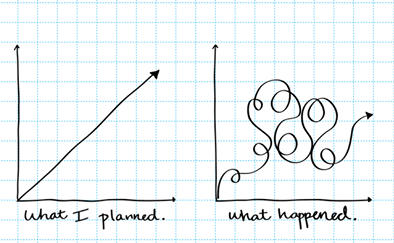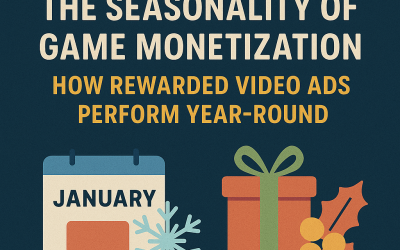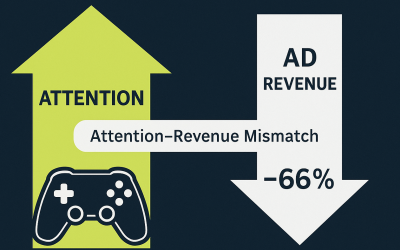Optimizing Reward Video Ads for Maximum Engagement and Revenue
Reward video ads have become a powerful tool for game developers to generate revenue. According to recent data, about 33% of game revenue comes from pre-roll and reward video ads, while ads overall account for 55% of total mobile publisher revenue. Given these figures, it’s tempting to think that integrating reward video ads will instantly bring in significant revenue. However, just as in game design, effective reward ad monetization requires ongoing testing, iteration, and strategic placement.
The key to maximizing the impact of reward video ads lies in finding the optimal reward insertion points. Let’s explore some ideal ad placement options, along with strategies for integrating ads in a way that boosts player engagement and revenue without compromising the gaming experience.
Contents
Testing Reward Video Ad Insertion Points
When first introducing reward video ads, it’s essential to test various insertion points to determine what works best for your game. These are the specific moments when players are most receptive to watching ads, as they align with gameplay flow and enhance the experience. Here are some effective insertion points to consider:
1. Start of Gameplay
Placing ads at the beginning of gameplay can give players an immediate boost, such as virtual currency, power-ups, or other game elements. This creates a positive start and motivates them to engage with the ad for additional benefits. Offering this “morale boost” can increase player engagement right from the start.
2. When the Going Gets Tough
Players often encounter challenging points in games where they may feel stuck. By offering a reward video ad at these moments, you can provide them with a valuable in-game boost, like extra lives or helpful hints. This placement helps maintain engagement during tough parts of the game and encourages players to keep playing rather than quitting.
3. Before Players Quit (Bonus Incentives)
When players are about to quit, a timely ad offering a reward can motivate them to continue. For example, Angry Birds 2 welcomes players back with daily gifts to encourage further engagement. By using a reward video ad as a “welcome back” bonus, developers can retain players who might otherwise leave the game.
4. End of Gameplay
While less conventional, placing a reward video ad at the end of a session can encourage players to return to the game. Studies show that post-game rewards motivate players to continue, as they feel acknowledged for their effort and receive a reward that can help them in their next session.
5. Celebrating Achievements (Virtual High-Five)
Games are structured around achievements, goals, and milestones. Rewarding players with an ad-based “virtual high-five”—such as a virtual item or extra life—encourages positive reinforcement. Players appreciate the recognition of their achievements and are more likely to watch the ad for added benefits.
6. Storefront (Virtual Shopping Incentive)
The storefront is a common place for reward video ads, especially when players browse for items or currency. By placing ads here, developers can encourage non-paying users to earn virtual currency or power-ups without spending real money, making this a prime ad location.
7. Upfront Menu (Early Game Access)
Placing reward video ads in the game’s main menu can provide non-paying users immediate access to virtual currency or power-ups without needing to reach the storefront. This early placement is ideal for players who want to boost their resources before diving into gameplay.
Each game is unique, and developers may need to adjust these insertion points to fit the game’s flow and structure. Testing each placement and adjusting based on player feedback and engagement metrics will help identify the most effective ad positions for a seamless experience.
Balancing Ad Placements for Player Experience and Revenue
While optimizing ad placements is essential for maximizing revenue, it’s equally important to maintain a positive player experience. Overloading players with ads can lead to frustration and reduced engagement, which ultimately harms monetization.
To avoid this, consider the following strategies:
- Prioritize Quality Over Quantity
It’s better to strategically place ads at valuable points rather than filling every possible gap with ads. Just as with other aspects of game design, quality placements that offer meaningful rewards are more effective than overwhelming players with ads. - Create Ads That Add Value
When players feel they’re gaining real value—such as extended gameplay time, helpful items, or extra lives—they’re more likely to engage willingly with reward video ads. This creates a balanced relationship where ads are viewed as helpful rather than disruptive. - Set Limits on Ad Frequency
Establish reasonable frequency limits for ads to prevent fatigue. For example, after a few views, offer a cooldown period before the next ad is available. This approach ensures ads remain a beneficial part of gameplay rather than a constant interruption. - Adapt Based on Player Behavior
Use player behavior data to adjust ad placements. If certain points lead to more skips or drops, it may be time to test new placement options. Adapting placements to match player preferences helps to maintain high engagement without sacrificing user satisfaction.
The Impact of Reward Video Ads on Session Length
Reward video ads not only drive revenue but also have a measurable impact on player engagement. According to a report from AdColony, video ads can increase player session time by more than 25%. This increase means that players who engage with reward video ads often stay longer, explore more features, and are more likely to make in-app purchases.
When players receive rewards for watching ads, they’re motivated to continue playing, which leads to better retention. A well-placed reward video ad can be an effective tool for turning short sessions into longer, more meaningful engagement, benefiting both players and developers.
Testing and Iteration: The Key to Success with Reward Video Ads
Implementing reward video ads is only the beginning. To truly maximize their effectiveness, continuous testing and iteration are necessary. Testing each ad placement, analyzing data on completion rates and revenue, and adjusting based on findings ensures that reward ads remain a valuable part of the game experience.
Key Metrics to Track:
- Completion Rate – Measures the percentage of players who watch ads in full.
- Engagement Rate – Indicates how often players choose to watch ads for rewards.
- Session Length – Tracks how much time players spend in the game after watching an ad.
- Revenue per Session – Measures how much revenue each ad view generates on average.
These metrics provide valuable insights into player preferences and help identify which ad placements yield the highest engagement and revenue.
Final Thoughts: Reward Video Ads as a Sustainable Revenue Source
Reward video ads have proven to be a sustainable and effective monetization strategy for game developers. By carefully choosing insertion points and testing placements, developers can optimize revenue without compromising the gaming experience.
Reward ads align with a player-first approach, offering valuable in-game benefits in exchange for voluntary ad engagement. This balance between monetization and user experience is essential for long-term success. Developers can keep players engaged, increase session lengths, and boost revenue, all while providing a positive, uninterrupted gaming experience.
In the next post, we’ll explore methods for measuring reward video ad effectiveness and tracking the impact on revenue and player engagement.
About AppLixir:
AppLixir is a trusted platform for reward video ads, supporting game monetization across Facebook, WebGL, and mobile apps. By offering players valuable in-game rewards, AppLixir’s platform helps developers generate revenue without interrupting gameplay.



